-
EXECUTIVE SUMMARY
-
MARKET ATTRACTIVENESS ANALYSIS
- GLOBAL HYDROGRAPHIC SURVEY EQUIPMENT MARKET, BY TYPE
- GLOBAL
-
HYDROGRAPHIC SURVEY EQUIPMENT MARKET, BY DEPTH
-
GLOBAL HYDROGRAPHIC SURVEY
-
EQUIPMENT MARKET, BY APPLICATION
-
GLOBAL HYDROGRAPHIC SURVEY EQUIPMENT
-
MARKET, BY END USER
-
REGION
-
GLOBAL HYDROGRAPHIC SURVEY EQUIPMENT MARKET, BY
-
MARKET INTRODUCTION
-
MARKET DEFINITION
-
SCOPE OF
-
THE STUDY
-
MARKET STRUCTURE
-
KEY BUYING CRITERIA
-
MARKET
-
FACTOR INDICATOR ANALYSIS
-
RESEARCH METHODOLOGY
-
RESEARCH PROCESS
-
PRIMARY RESEARCH
-
SECONDARY RESEARCH
-
MARKET SIZE ESTIMATION
-
FORECAST MODEL
-
LIST OF ASSUMPTIONS
-
MARKET INSIGHTS
-
MARKET DYNAMICS
-
INTRODUCTION
-
DRIVERS
- INCREASING
- RISE IN DEMAND FOR ACCURATE NAUTICAL CHARTS
- DRIVERS IMPACT ANALYSIS
-
MARITIME TRADE
-
INCREASING USE OF UUVS AND USVS
-
RESTRAINTS
- ISSUES RELATED TO STRINGENT REGULATIONS IMPLEMENTED BY GOVERNMENT AUTHORITIES
- COST AND TIME INEFFICIENCY
- RESTRAINTS IMPACT ANALYSIS
-
OPPORTUNITIES
-
MARKET/TECHNOLOGICAL TRENDS
-
PATENT TRENDS
-
REGULATORY LANDSCAPE/STANDARDS
-
MARKET FACTOR ANALYSIS
-
SUPPLY CHAIN
- R&D
- MANUFACTURING
- DISTRIBUTION
- POST-SALES MONITORING
-
ANALYSIS
-
& SALES
-
PORTER’S FIVE FORCES
- THREAT OF NEW ENTRANTS
- BARGAINING POWER OF SUPPLIERS
- BARGAINING POWER OF BUYERS
- THREAT OF SUBSTITUTES
-
ANALYSIS
-
INTENSITY OF RIVALRY
-
GLOBAL HYDROGRAPHIC SURVEY EQUIPMENT MARKET, BY TYPE
-
INTRODUCTION
-
SENSING SYSTEMS
-
POSITIONING SYSTEMS
-
SUBSEA SENSORS
-
SOFTWARE
-
UNMANNED VEHICLES
-
GLOBAL HYDROGRAPHIC
-
SURVEY EQUIPMENT MARKET, BY DEPTH
-
INTRODUCTION
-
SHALLOW WATER
-
DEEP WATER
-
GLOBAL HYDROGRAPHIC SURVEY EQUIPMENT MARKET, BY APPLICATION
-
INTRODUCTION
-
HYDROGRAPHIC CHARTING
-
OFFSHORE OIL &
-
GAS SURVEY
-
PORT AND HARBOR MANAGEMENT
-
COASTAL ENGINEERING
-
GLOBAL HYDROGRAPHIC SURVEY EQUIPMENT MARKET, BY END USER
-
INTRODUCTION
-
COMMERCIAL
-
RESEARCH
-
DEFENSE
-
GLOBAL HYDROGRAPHIC
-
SURVEY EQUIPMENT MARKET, BY REGION
-
INTRODUCTION
-
NORTH AMERICA
- US
- CANADA
-
EUROPE
- UK
- FRANCE
- NORWAY
- RUSSIA
- REST OF EUROPE
-
GERMANY
-
NETHERLANDS
-
ASIA-PACIFIC
- CHINA
- INDIA
- JAPAN
- MALAYSIA
- REST OF ASIA-PACIFIC
-
MIDDLE EAST & AFRICA
- UAE
- SAUDI ARABIA
- REST OF THE MIDDLE EAST & AFRICA
-
ISRAEL
-
LATIN AMERICA
- BRAZIL
- MEXICO
- REST OF THE LATIN AMERICA
-
COMPETITIVE LANDSCAPE
-
COMPETITIVE OVERVIEW
-
COMPETITOR DASHBOARD
-
MAJOR GROWTH STRATEGIES IN THE GLOBAL HYDROGRAPHIC SURVEY EQUIPMENT MARKET
-
COMPETITIVE BENCHMARKING
-
MARKET SHARE ANALYSIS
-
LEADING
-
PLAYER IN TERMS OF NUMBER OF DEVELOPMENTS IN THE GLOBAL HYDROGRAPHIC SURVEY EQUIPMENT
-
MARKET
-
KEY DEVELOPMENTS & GROWTH STRATEGIES
- PRODUCT
- MERGERS & ACQUISITIONS
-
LAUNCHES/SERVICE DEPLOYMENTS
-
JOINT VENTURES
-
COMPANY PROFILES
-
KEY MARKET PLAYERS
-
(COMPANY
-
OVERVIEW, PRODUCTS & SERVICES OFFERED, FINANCIAL OVERVIEW, KEY DEVELOPMENTS,
-
SWOT ANALYSIS, AND KEY STRATEGIES TO BE COVERED FOR PUBLIC COMPANIES)
-
KONGSBERG
-
CHESAPEAKE TECHNOLOGY
-
EDGETECH
-
ENVIRONMENTAL
-
SYSTEMS RESEARCH INSTITUTE, INC. (ESRI)
-
INNOMAR TECHNOLOGIE GMBH
-
IXBLUE SAS
-
MITCHAM INDUSTRIES INC.
-
SAAB AB
-
SONARDYNE
-
INTERNATIONAL LTD.
-
IXBLUE SAS
-
OTHER PROMINENT PLAYERS
-
SYQWEST INC.
-
TELEDYNE TECHNOLOGIES INC.
-
TRITECH INTERNATIONAL
-
LTD.
-
VALEPORT LTD.
-
XYLEM, INC.
-
MOOG INC.
-
SEAFLOOR SYSTEMS INC.
-
RAYTHEON TECHNOLOGIES CORPORATION
-
THALES
-
GROUP
-
ATLAS ELECTRONIK GMBH
-
APPENDIX
-
REFERENCES
-
RELATED REPORTS
-
LIST OF ABBREVIATIONS
-
-
LIST OF
-
TABLES
-
LIST OF ASSUMPTIONS
-
MAJOR PATENTS GRANTED FOR HYDROGRAPHIC
-
SURVEY EQUIPMENT (2014–2020)
-
GLOBAL HYDROGRAPHIC SURVEY EQUIPMENT
-
MARKET, BY TYPE, 2020-2030 (USD MILLION)
-
GLOBAL HYDROGRAPHIC SURVEY
-
EQUIPMENT MARKET, BY APPLICATION, 2020-2030(USD MILLION)
-
GLOBAL HYDROGRAPHIC
-
SURVEY EQUIPMENT MARKET, BY END USER, 2020-2030 (USD MILLION)
-
GLOBAL
-
HYDROGRAPHIC SURVEY EQUIPMENT MARKET, BY DEPTH, 2020-2030 (USD MILLION)
-
TABLE
-
GLOBAL HYDROGRAPHIC SURVEY EQUIPMENT MARKET, BY REGION, 2020-2030 (USD MILLION)
-
NORTH AMERICA: HYDROGRAPHIC SURVEY EQUIPMENT MARKET, BY COUNTRY, 2020-2030(USD
-
MILLION)
-
NORTH AMERICA: HYDROGRAPHIC SURVEY EQUIPMENT MARKET, BY TYPE,
-
NORTH AMERICA: HYDROGRAPHIC SURVEY EQUIPMENT
-
MARKET, BY APPLICATION, 2020-2030 (USD MILLION)
-
NORTH AMERICA: HYDROGRAPHIC
-
SURVEY EQUIPMENT MARKET, BY END USER, 2020-2030 (USD MILLION)
-
NORTH
-
AMERICA: HYDROGRAPHIC SURVEY EQUIPMENT MARKET, BY DEPTH, 2020-2030 (USD MILLION)
-
US: HYDROGRAPHIC SURVEY EQUIPMENT MARKET, BY TYPE, 2020-2030 (USD MILLION)
-
US: HYDROGRAPHIC SURVEY EQUIPMENT MARKET, BY APPLICATION, 2020-2030 (USD
-
MILLION)
-
US: HYDROGRAPHIC SURVEY EQUIPMENT MARKET, BY END USER, 2020-2030
-
(USD MILLION)
-
US: HYDROGRAPHIC SURVEY EQUIPMENT MARKET, BY DEPTH,
-
CANADA: HYDROGRAPHIC SURVEY EQUIPMENT MARKET,
-
BY TYPE, 2020-2030 (USD MILLION)
-
CANADA: HYDROGRAPHIC SURVEY EQUIPMENT
-
MARKET, BY APPLICATION, 2020-2030 (USD MILLION)
-
CANADA: HYDROGRAPHIC
-
SURVEY EQUIPMENT MARKET, BY END USER, 2020-2030 (USD MILLION)
-
CANADA:
-
HYDROGRAPHIC SURVEY EQUIPMENT MARKET, BY DEPTH, 2020-2030 (USD MILLION)
-
TABLE
-
EUROPE: HYDROGRAPHIC SURVEY EQUIPMENT MARKET, BY COUNTRY, 2020-2030 (USD MILLION)
-
EUROPE: HYDROGRAPHIC SURVEY EQUIPMENT MARKET, BY TYPE, 2020-2030 (USD
-
MILLION)
-
EUROPE: HYDROGRAPHIC SURVEY EQUIPMENT MARKET, BY APPLICATION,
-
EUROPE: HYDROGRAPHIC SURVEY EQUIPMENT MARKET,
-
BY END USER, 2020-2030 (USD MILLION)
-
EUROPE: HYDROGRAPHIC SURVEY EQUIPMENT
-
MARKET, BY DEPTH, 2020-2030 (USD MILLION)
-
UK: HYDROGRAPHIC SURVEY
-
EQUIPMENT MARKET, BY TYPE, 2020-2030 (USD MILLION)
-
UK: HYDROGRAPHIC
-
SURVEY EQUIPMENT MARKET, BY APPLICATION, 2020-2030 (USD MILLION)
-
UK:
-
HYDROGRAPHIC SURVEY EQUIPMENT MARKET, BY END USER, 2020-2030 (USD MILLION)
-
TABLE
-
UK: HYDROGRAPHIC SURVEY EQUIPMENT MARKET, BY DEPTH, 2020-2030 (USD MILLION)
-
GERMANY: HYDROGRAPHIC SURVEY EQUIPMENT MARKET, BY TYPE, 2020-2030 (USD
-
MILLION)
-
GERMANY: HYDROGRAPHIC SURVEY EQUIPMENT MARKET, BY APPLICATION,
-
GERMANY: HYDROGRAPHIC SURVEY EQUIPMENT MARKET,
-
BY END USER, 2020-2030 (USD MILLION)
-
GERMANY: HYDROGRAPHIC SURVEY
-
EQUIPMENT MARKET, BY DEPTH, 2020-2030 (USD MILLION)
-
FRANCE: HYDROGRAPHIC
-
SURVEY EQUIPMENT MARKET, BY TYPE, 2020-2030 (USD MILLION)
-
FRANCE:
-
HYDROGRAPHIC SURVEY EQUIPMENT MARKET, BY APPLICATION, 2020-2030 (USD MILLION)
-
FRANCE: HYDROGRAPHIC SURVEY EQUIPMENT MARKET, BY END USER, 2020-2030
-
(USD MILLION)
-
FRANCE: HYDROGRAPHIC SURVEY EQUIPMENT MARKET, BY DEPTH,
-
NORWAY: HYDROGRAPHIC SURVEY EQUIPMENT MARKET,
-
BY TYPE, 2020-2030 (USD MILLION)
-
NORWAY: HYDROGRAPHIC SURVEY EQUIPMENT
-
MARKET, BY APPLICATION, 2020-2030 (USD MILLION)
-
NORWAY: HYDROGRAPHIC
-
SURVEY EQUIPMENT MARKET, BY END USER, 2020-2030 (USD MILLION)
-
NORWAY:
-
HYDROGRAPHIC SURVEY EQUIPMENT MARKET, BY DEPTH, 2020-2030 (USD MILLION)
-
TABLE
-
RUSSIA: HYDROGRAPHIC SURVEY EQUIPMENT MARKET, BY TYPE, 2020-2030 (USD MILLION)
-
RUSSIA: HYDROGRAPHIC SURVEY EQUIPMENT MARKET, BY APPLICATION, 2020-2030
-
(USD MILLION)
-
RUSSIA: HYDROGRAPHIC SURVEY EQUIPMENT MARKET, BY END
-
USER, 2020-2030 (USD MILLION)
-
RUSSIA: HYDROGRAPHIC SURVEY EQUIPMENT
-
MARKET, BY DEPTH, 2020-2030 (USD MILLION)
-
NETHERLANDS: HYDROGRAPHIC
-
SURVEY EQUIPMENT MARKET, BY TYPE, 2020-2030 (USD MILLION)
-
NETHERLANDS:
-
HYDROGRAPHIC SURVEY EQUIPMENT MARKET, BY APPLICATION, 2020-2030 (USD MILLION)
-
NETHERLANDS: HYDROGRAPHIC SURVEY EQUIPMENT MARKET, BY END USER, 2020-2030
-
(USD MILLION)
-
NETHERLANDS: HYDROGRAPHIC SURVEY EQUIPMENT MARKET, BY
-
DEPTH, 2020-2030 (USD MILLION)
-
REST OF EUROPE: HYDROGRAPHIC SURVEY
-
EQUIPMENT MARKET, BY TYPE, 2020-2030 (USD MILLION)
-
REST OF EUROPE:
-
HYDROGRAPHIC SURVEY EQUIPMENT MARKET, BY APPLICATION, 2020-2030 (USD MILLION)
-
REST OF EUROPE: HYDROGRAPHIC SURVEY EQUIPMENT MARKET, BY END USER, 2020-2030
-
(USD MILLION)
-
REST OF EUROPE: HYDROGRAPHIC SURVEY EQUIPMENT MARKET,
-
BY DEPTH, 2020-2030 (USD MILLION)
-
ASIA-PACIFIC: HYDROGRAPHIC SURVEY
-
EQUIPMENT MARKET, BY COUNTRY, 2020-2030 (USD MILLION)
-
ASIA-PACIFIC:
-
HYDROGRAPHIC SURVEY EQUIPMENT MARKET, BY TYPE, 2020-2030 (USD MILLION)
-
TABLE
-
ASIA-PACIFIC: HYDROGRAPHIC SURVEY EQUIPMENT MARKET, BY APPLICATION, 2020-2030
-
(USD MILLION)
-
ASIA-PACIFIC: HYDROGRAPHIC SURVEY EQUIPMENT MARKET,
-
BY END USER, 2020-2030 (USD MILLION)
-
ASIA-PACIFIC: HYDROGRAPHIC SURVEY
-
EQUIPMENT MARKET, BY DEPTH, 2020-2030 (USD MILLION)
-
CHINA: HYDROGRAPHIC
-
SURVEY EQUIPMENT MARKET, BY TYPE, 2020-2030 (USD MILLION)
-
CHINA: HYDROGRAPHIC
-
SURVEY EQUIPMENT MARKET, BY APPLICATION, 2020-2030 (USD MILLION)
-
CHINA:
-
HYDROGRAPHIC SURVEY EQUIPMENT MARKET, BY END USER, 2020-2030 (USD MILLION)
-
TABLE
-
CHINA: HYDROGRAPHIC SURVEY EQUIPMENT MARKET, BY DEPTH, 2020-2030 (USD MILLION)
-
INDIA: HYDROGRAPHIC SURVEY EQUIPMENT MARKET, BY TYPE, 2020-2030 (USD
-
MILLION)
-
INDIA: HYDROGRAPHIC SURVEY EQUIPMENT MARKET, BY APPLICATION,
-
INDIA: HYDROGRAPHIC SURVEY EQUIPMENT MARKET,
-
BY END USER, 2020-2030 (USD MILLION)
-
INDIA: HYDROGRAPHIC SURVEY EQUIPMENT
-
MARKET, BY DEPTH, 2020-2030 (USD MILLION)
-
JAPAN: HYDROGRAPHIC SURVEY
-
EQUIPMENT MARKET, BY TYPE, 2020-2030 (USD MILLION)
-
JAPAN: HYDROGRAPHIC
-
SURVEY EQUIPMENT MARKET, BY APPLICATION, 2020-2030 (USD MILLION)
-
JAPAN:
-
HYDROGRAPHIC SURVEY EQUIPMENT MARKET, BY END USER, 2020-2030 (USD MILLION)
-
TABLE
-
JAPAN: HYDROGRAPHIC SURVEY EQUIPMENT MARKET, BY DEPTH, 2020-2030 (USD MILLION)
-
MALAYSIA: HYDROGRAPHIC SURVEY EQUIPMENT MARKET, BY TYPE, 2020-2030 (USD
-
MILLION)
-
MALAYSIA: HYDROGRAPHIC SURVEY EQUIPMENT MARKET, BY APPLICATION,
-
MALAYSIA: HYDROGRAPHIC SURVEY EQUIPMENT MARKET,
-
BY END USER, 2020-2030 (USD MILLION)
-
MALAYSIA: HYDROGRAPHIC SURVEY
-
EQUIPMENT MARKET, BY DEPTH, 2020-2030 (USD MILLION)
-
REST OF ASIA-PACIFIC:
-
HYDROGRAPHIC SURVEY EQUIPMENT MARKET, BY TYPE, 2020-2030 (USD MILLION)
-
TABLE
-
REST OF ASIA-PACIFIC: HYDROGRAPHIC SURVEY EQUIPMENT MARKET, BY APPLICATION, 2020-2030
-
(USD MILLION)
-
REST OF ASIA-PACIFIC: HYDROGRAPHIC SURVEY EQUIPMENT
-
MARKET, BY END USER, 2020-2030 (USD MILLION)
-
REST OF ASIA-PACIFIC:
-
HYDROGRAPHIC SURVEY EQUIPMENT MARKET, BY DEPTH, 2020-2030 (USD MILLION)
-
TABLE
-
MIDDLE EAST & AFRICA: HYDROGRAPHIC SURVEY EQUIPMENT MARKET, BY COUNTRY, 2020-2030
-
(USD MILLION)
-
MIDDLE EAST & AFRICA: HYDROGRAPHIC SURVEY EQUIPMENT
-
MARKET, BY TYPE, 2020-2030 (USD MILLION)
-
MIDDLE EAST & AFRICA:
-
HYDROGRAPHIC SURVEY EQUIPMENT MARKET, BY APPLICATION, 2020-2030 (USD MILLION)
-
MIDDLE EAST & AFRICA: HYDROGRAPHIC SURVEY EQUIPMENT MARKET, BY END
-
USER, 2020-2030 (USD MILLION)
-
MIDDLE EAST & AFRICA: HYDROGRAPHIC
-
SURVEY EQUIPMENT MARKET, BY DEPTH, 2020-2030 (USD MILLION)
-
UAE: HYDROGRAPHIC
-
SURVEY EQUIPMENT MARKET, BY TYPE, 2020-2030 (USD MILLION)
-
UAE: HYDROGRAPHIC
-
SURVEY EQUIPMENT MARKET, BY APPLICATION, 2020-2030 (USD MILLION)
-
UAE:
-
HYDROGRAPHIC SURVEY EQUIPMENT MARKET, BY END USER, 2020-2030 (USD MILLION)
-
TABLE
-
UAE: HYDROGRAPHIC SURVEY EQUIPMENT MARKET, BY DEPTH, 2020-2030 (USD MILLION)
-
SAUDI ARABIA: HYDROGRAPHIC SURVEY EQUIPMENT MARKET, BY TYPE, 2020-2030
-
(USD MILLION)
-
SAUDI ARABIA: HYDROGRAPHIC SURVEY EQUIPMENT MARKET,
-
BY APPLICATION, 2020-2030 (USD MILLION)
-
SAUDI ARABIA: HYDROGRAPHIC
-
SURVEY EQUIPMENT MARKET, BY END USER, 2020-2030 (USD MILLION)
-
SAUDI
-
ARABIA: HYDROGRAPHIC SURVEY EQUIPMENT MARKET, BY DEPTH, 2020-2030 (USD MILLION)
-
ISRAEL: HYDROGRAPHIC SURVEY EQUIPMENT MARKET, BY TYPE, 2020-2030 (USD
-
MILLION)
-
ISRAEL: HYDROGRAPHIC SURVEY EQUIPMENT MARKET, BY APPLICATION,
-
ISRAEL: HYDROGRAPHIC SURVEY EQUIPMENT MARKET,
-
BY END USER, 2020-2030 (USD MILLION)
-
ISRAEL: HYDROGRAPHIC SURVEY EQUIPMENT
-
MARKET, BY DEPTH, 2020-2030 (USD MILLION)
-
REST OF THE MIDDLE EAST
-
& AFRICA: HYDROGRAPHIC SURVEY EQUIPMENT MARKET, BY TYPE, 2020-2030 (USD MILLION)
-
REST OF THE MIDDLE EAST & AFRICA: HYDROGRAPHIC SURVEY EQUIPMENT MARKET,
-
BY APPLICATION, 2020-2030 (USD MILLION)
-
REST OF THE MIDDLE EAST &
-
AFRICA: HYDROGRAPHIC SURVEY EQUIPMENT MARKET, BY END USER, 2020-2030 (USD MILLION)
-
REST OF THE MIDDLE EAST & AFRICA: HYDROGRAPHIC SURVEY EQUIPMENT MARKET,
-
BY DEPTH, 2020-2030 (USD MILLION)
-
LATIN AMERICA: HYDROGRAPHIC SURVEY
-
EQUIPMENT MARKET, BY COUNTRY, 2020-2030 (USD MILLION)
-
LATIN AMERICA:
-
HYDROGRAPHIC SURVEY EQUIPMENT MARKET, BY TYPE, 2020-2030 (USD MILLION)
-
TABLE
-
LATIN AMERICA: HYDROGRAPHIC SURVEY EQUIPMENT MARKET, BY APPLICATION, 2020-2030
-
(USD MILLION)
-
LATIN AMERICA: HYDROGRAPHIC SURVEY EQUIPMENT MARKET,
-
BY END USER, 2020-2030 (USD MILLION)
-
LATIN AMERICA: HYDROGRAPHIC
-
SURVEY EQUIPMENT MARKET, BY DEPTH, 2020-2030 (USD MILLION)
-
BRAZIL:
-
HYDROGRAPHIC SURVEY EQUIPMENT MARKET, BY TYPE, 2020-2030 (USD MILLION)
-
TABLE
-
BRAZIL: HYDROGRAPHIC SURVEY EQUIPMENT MARKET, BY APPLICATION, 2020-2030 (USD
-
MILLION)
-
BRAZIL: HYDROGRAPHIC SURVEY EQUIPMENT MARKET, BY END USER,
-
BRAZIL: HYDROGRAPHIC SURVEY EQUIPMENT MARKET,
-
BY DEPTH, 2020-2030 (USD MILLION)
-
MEXICO: HYDROGRAPHIC SURVEY EQUIPMENT
-
MARKET, BY TYPE, 2020-2030 (USD MILLION)
-
MEXICO: HYDROGRAPHIC SURVEY
-
EQUIPMENT MARKET, BY APPLICATION, 2020-2030 (USD MILLION)
-
MEXICO:
-
HYDROGRAPHIC SURVEY EQUIPMENT MARKET, BY END USER, 2020-2030 (USD MILLION)
-
TABLE
-
MEXICO: HYDROGRAPHIC SURVEY EQUIPMENT MARKET, BY DEPTH, 2020-2030 (USD MILLION)
-
REST OF THE LATIN AMERICA: HYDROGRAPHIC SURVEY EQUIPMENT MARKET, BY
-
TYPE, 2020-2030 (USD MILLION)
-
REST OF THE LATIN AMERICA: HYDROGRAPHIC
-
SURVEY EQUIPMENT MARKET, BY APPLICATION, 2020-2030 (USD MILLION)
-
TABLE 115
-
REST OF THE LATIN AMERICA: HYDROGRAPHIC SURVEY EQUIPMENT MARKET, BY END USER, 2020-2030
-
(USD MILLION)
-
REST OF THE LATIN AMERICA: HYDROGRAPHIC SURVEY EQUIPMENT
-
MARKET, BY DEPTH, 2020-2030 (USD MILLION)
-
THE MOST ACTIVE PLAYERS
-
IN THE GLOBAL HYDROGRAPHIC SURVEY EQUIPMENT MARKET
-
CONTRACTS &
-
AGREEMENTS
-
MERGERS & ACQUISITIONS
-
PRODUCT/SERVICE
-
DEVELOPMENTS
-
EXPANSIONS & INVESTMENTS
-
JOINT VENTURES
-
& PARTNERSHIPS
-
-
LIST OF FIGURES
-
MARKET SYNOPSIS
-
GLOBAL HYDROGRAPHIC SURVEY EQUIPMENT MARKET: MARKET ATTRACTIVENESS ANALYSIS
-
GLOBAL HYDROGRAPHIC SURVEY EQUIPMENT MARKET ANALYSIS, BY TYPE
-
FIGURE
-
GLOBAL HYDROGRAPHIC SURVEY EQUIPMENT MARKET ANALYSIS, BY APPLICATION
-
FIGURE
-
GLOBAL HYDROGRAPHIC SURVEY EQUIPMENT MARKET ANALYSIS, BY END USER
-
FIGURE
-
GLOBAL HYDROGRAPHIC SURVEY EQUIPMENT MARKET ANALYSIS, BY DEPTH
-
GLOBAL
-
HYDROGRAPHIC SURVEY EQUIPMENT MARKET ANALYSIS, BY REGION
-
GLOBAL HYDROGRAPHIC
-
SURVEY EQUIPMENT MARKET: MARKET STRUCTURE
-
KEY BUYING CRITERIA FOR
-
HYDROGRAPHIC SURVEY EQUIPMENT TECHNOLOGIES
-
RESEARCH PROCESS OF MRFR
-
NORTH AMERICA: MARKET SIZE & MARKET SHARE, BY COUNTRY, 2020 VS 2028
-
EUROPE: MARKET SIZE & MARKET SHARE, BY COUNTRY, 2020 VS 2028
-
ASIA-PACIFIC: MARKET SIZE & MARKET SHARE, BY COUNTRY, 2020 VS 2028
-
MIDDLE EAST & AFRICA: MARKET SIZE & MARKET SHARE, BY COUNTRY,
-
LATIN AMERICA: MARKET SIZE & MARKET SHARE, BY COUNTRY,
-
MARKET DYNAMICS OVERVIEW
-
DRIVERS IMPACT
-
ANALYSIS: GLOBAL HYDROGRAPHIC SURVEY EQUIPMENT MARKET
-
RESTRAINTS
-
IMPACT ANALYSIS: GLOBAL HYDROGRAPHIC SURVEY EQUIPMENT MARKET
-
PORTER’S
-
FIVE FORCES ANALYSIS OF THE GLOBAL HYDROGRAPHIC SURVEY EQUIPMENT MARKET
-
FIGURE
-
SUPPLY CHAIN: GLOBAL HYDROGRAPHIC SURVEY EQUIPMENT MARKET
-
GLOBAL
-
HYDROGRAPHIC SURVEY EQUIPMENT MARKET SHARE, BY TYPE, 2020 (% SHARE)
-
FIGURE
-
GLOBAL HYDROGRAPHIC SURVEY EQUIPMENT MARKET SHARE, BY END USER, 2020 (% SHARE)
-
GLOBAL HYDROGRAPHIC SURVEY EQUIPMENT MARKET SHARE, BY APPLICATION, 2020
-
(% SHARE)
-
GLOBAL HYDROGRAPHIC SURVEY EQUIPMENT MARKET SHARE, BY DEPTH,
-
GLOBAL HYDROGRAPHIC SURVEY EQUIPMENT MARKET SHARE,
-
BY REGION, 2020 (% SHARE)
-
NORTH AMERICA: HYDROGRAPHIC SURVEY EQUIPMENT
-
MARKET SHARE, BY COUNTRY, 2020 (% SHARE)
-
EUROPE: HYDROGRAPHIC SURVEY
-
EQUIPMENT MARKET SHARE, BY COUNTRY, 2020 (% SHARE)
-
ASIA-PACIFIC:
-
HYDROGRAPHIC SURVEY EQUIPMENT MARKET SHARE, BY COUNTRY, 2020 (% SHARE)
-
FIGURE
-
MIDDLE EAST & AFRICA: HYDROGRAPHIC SURVEY EQUIPMENT MARKET SHARE, BY COUNTRY,
-
LATIN AMERICA: HYDROGRAPHIC SURVEY EQUIPMENT MARKET
-
SHARE, BY REGION, 2020 (% SHARE)
-
COMPETITOR DASHBOARD: GLOBAL HYDROGRAPHIC
-
SURVEY EQUIPMENT MARKET
-
CAPITAL MARKET RATIO AND FINANCIAL MATRIX
-
CONTRACTS & AGREEMENTS: THE MAJOR STRATEGY ADOPTED BY KEY PLAYERS
-
IN THE GLOBAL HYDROGRAPHIC SURVEY EQUIPMENT MARKET
-
BENCHMARKING OF
-
MAJOR COMPETITORS
-
MAJOR SERVICE PROVIDERS MARKET SHARE ANALYSIS,

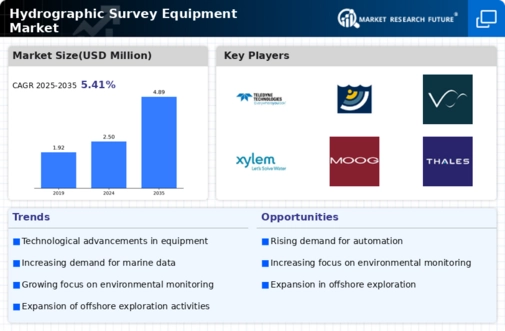
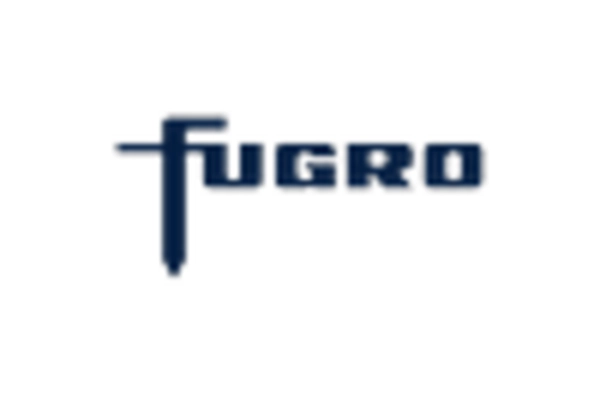

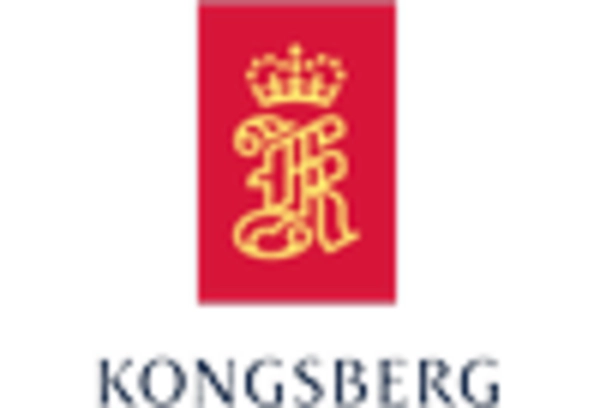
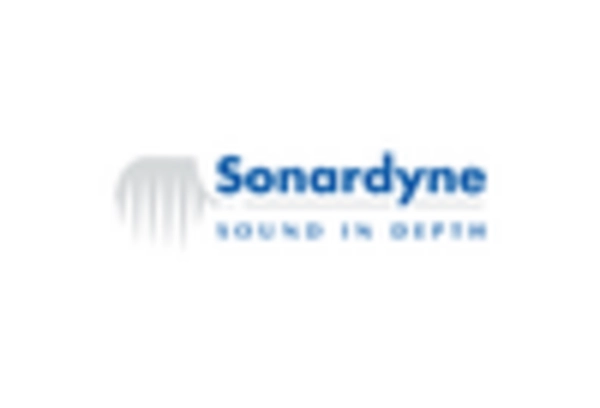
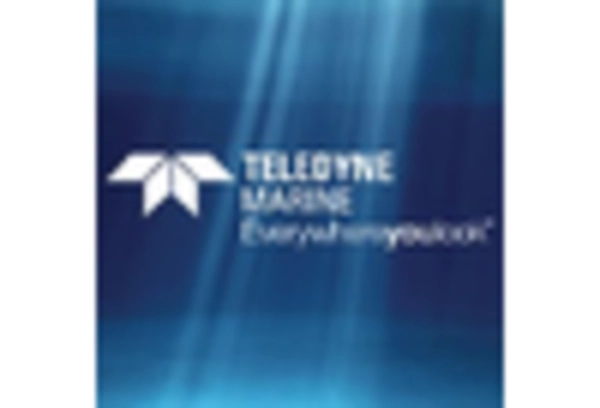
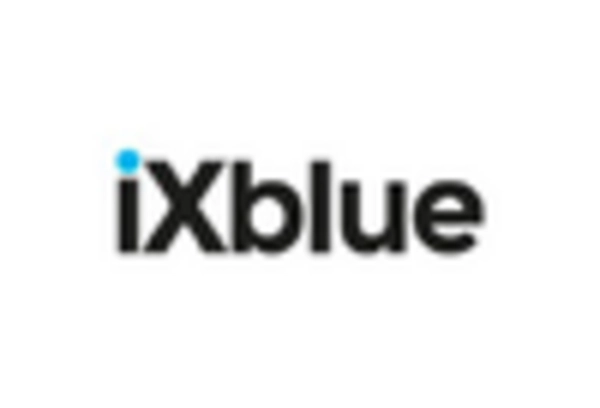









Leave a Comment